Technology

5 min

Are you stuck choosing between native and cross-platforms to develop a healthcare app? Worried about long timelines, rising costs, or HIPAA compliance issues with the wrong technology? We are one of the top healthcare mobile app development companies to help you save!

By Dhruv Joshi
06 Jun, 2025
Whether you're launching a patient-facing app, telehealth solution, or clinical management platform, making the wrong tech choice early on can cost you thousands, delay your time-to-market, or compromise patient data.
In this blog, we will provide clear, actionable guidance from Quokka Labs, one of the top healthcare mobile app development companies, to help you confidently choose between native and cross-platform solutions for your healthcare product.
In healthcare, your technology stack isn't just about features; it's about life-critical reliability, especially solutions like SaMD (Software as a Medical Device), which require strict compliance and uninterrupted performance.
Here's why the choice is so important:
Security First: Patient data is highly sensitive and strictly regulated under frameworks such as HIPAA in the U.S. A tech stack without robust data encryption, secure authentication, and audit trail capabilities opens the door to breaches, lawsuits, and a loss of user trust.
Integration Complexity: Healthcare apps rarely exist in a silo. They often require seamless integration with Electronic Health Record or Electronic Medical Record systems, diagnostic tools, wearable devices, laboratories, pharmacies, and insurance systems. Choosing a stack that limits API compatibility or lacks interoperability features can derail your entire product vision.
Performance at Scale: As your user base rises, whether it's patients, doctors, or administrators, your app must scale without lag, downtime, or data loss. The wrong stack may struggle under concurrent data loads, especially during telemedicine sessions or real-time monitoring.
Speed to Market vs Long-Term Stability: Startups need to move fast, but rapid development shouldn't come at the cost of future scalability or regulatory non-compliance. A proper tech stack helps you balance MVP timelines with long-term viability.
Offline & Real-Time Support: In many healthcare settings, like ambulances or remote villages, the internet isn’t always reliable. That means your technology needs to work even when it’s offline and still update information quickly once it’s back online. Your system has to be ready for these tricky situations and keep everything running without a hitch.
Top healthcare app development companies really get it, your technology setup has to juggle a few important things. It needs to follow HIPAA rules to keep patient info safe, work even when there’s no internet, support chatting or live updates instantly, and run smoothly on different devices. They know all these pieces have to fit together just right.

Native app development involves creating separate applications for iOS and Android, utilizing platform-specific programming languages and tools: Swift/Objective-C for iOS and Kotlin/Java for Android. Each app is tailored to the unique design standards and capabilities of its respective platform, offering optimal performance, user experience, and security.
This approach is often preferred by custom healthcare app development companies when reliability, compliance, and complex features are critical.
Top-Notch Performance
Native apps are super fast and smooth because they talk straight to the phone’s hardware and system. This matters a lot in healthcare apps where things like live data, video calls, or AI-based checks need to work without a hitch. So, if speed and quick response are important, native apps really shine here.
Strong Security You Can Trust
If you want to build HIPAA-compliant apps, going native gives you a big advantage. It lets developers add powerful security features like tough encryption, safe offline storage, and cool biometric logins like Face ID or fingerprints. Plus, managing secure sessions is way easier—something every healthcare app company needs to get right.
Offline Functionality
For remote patient monitoring or emergency care apps, especially in ambulances, rural clinics, or during network outages, native apps can operate offline without compromising data integrity.
Better User Experience and Design
When you build apps natively, you get to use the special design elements and gestures that belong to each platform. This means the app feels natural and smooth—like it just fits. That’s super important, especially for older folks or people who aren’t so comfortable with tech. They won’t get confused or frustrated because everything acts the way they expect it to.
Scalability
As your app grows in complexity, native frameworks make it easier to maintain high performance and integrate new technologies, such as AR/VR or IoT-enabled medical devices.
1. Higher Development Costs
Since you're building and maintaining two separate codebases, you'll need more developers—usually one team for iOS and another for Android—making native a bigger investment upfront.
2. Longer Time-to-Market
Building native apps usually takes quite a bit of time. You’ve got to develop, test, and then launch them carefully. Plus, if you want the same changes on both platforms, it can get even trickier because you have to do everything twice. It’s a bit of a slow process, honestly.
3. Code Duplication
Shared features need to be re-implemented on both platforms, resulting in duplicated effort unless you utilize tools to synchronize logic.
Even with some downsides, many leading healthcare app developers still suggest going native if you want your app to be super reliable, follow HIPAA rules, and grow smoothly over time. Honestly, it’s usually the best way to make sure your product can handle serious business needs without hiccups.
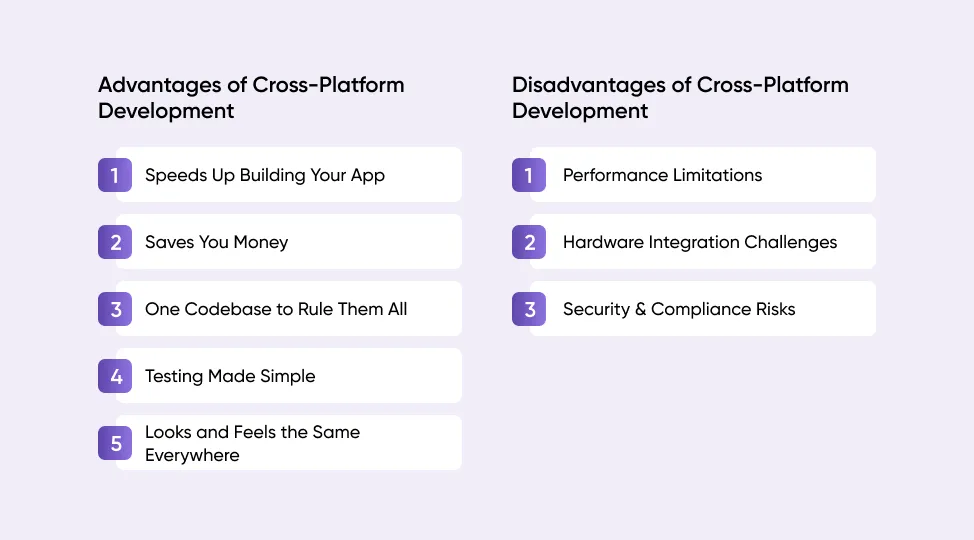
Imagine you want to build a mobile app that works on both iPhones and Android phones without writing two completely different sets of code. That’s exactly what cross-platform development is all about. It lets developers write just one codebase and use it on many devices. Some popular tools for this are Flutter, React Native, and Xamarin. If you're exploring React Native app development, it's one of the most widely used options for building high-quality, cross-platform healthcare apps efficiently.
A lot of healthcare app companies, especially smaller ones or those just starting out, love this method. Why? Because it helps them get their ideas tested fast and without spending tons of money. This is perfect for early projects like startups, pilot runs, or minimum viable products (MVPs) when you want to see if your app idea actually works before going all-in.
Speeds Up Building Your App Because developers only need to write one set of code instead of two, the whole app-building process goes way faster. This is perfect if you’re a startup wanting to get your app out there quickly and start hearing from real users.
Saves You Money Instead of hiring separate teams for iPhone and Android, you can have one team handle both. That means fewer people, fewer hours, and less money spent—something especially helpful for small healthcare businesses or when you just want to test the waters with a simple version of your app.
One Codebase to Rule Them All When it’s time to fix bugs, add cool new features, or patch security issues, you do it once and it works everywhere. This makes keeping the app up-to-date much easier and cheaper, plus your users get the same smooth experience no matter their device.
Testing Made Simple Since there’s just one codebase, you test the app one time and boom—it’s good to go on both Android and iOS. This saves a ton of time and headaches in quality checks.
Looks and Feels the Same Everywhere Tools like Flutter come with ready-made buttons and screens that look great on all devices. This is super important for healthcare apps where everything needs to be clear and easy to use—no confusion allowed!
Performance Limitations While adequate for many use cases, cross-platform apps may lag in real-time functionalities, complex animations, or high-performance tasks like video consultations or image processing.
Hardware Integration Challenges Features like Bluetooth for medical devices, GPS for location tracking, or camera-based functionalities may require additional plugins or native modules, increasing complexity.
Security & Compliance Risks On the flip side, if you choose cross-platform tools like Flutter or React Native, things get trickier. You can make them HIPAA-compliant, but it’s no walk in the park. That’s why working with a HIPAA compliant app development partner is critical at this stage.
Tip: If you're an early-stage healthcare startup building a telemedicine MVP, appointment scheduler, or patient engagement app, top healthcare mobile app development companies often recommend cross-platform development to reduce time-to-market and validate product-market fit.
Before selecting your tech stack, it's critical to evaluate your app's specific needs through the lens of healthcare regulations, user expectations, and long-term goals. Here's what to consider:
When it comes to healthcare apps, security isn’t something you can skip—it's absolutely crucial. Native apps have a big advantage here because they work closely with the device’s built-in security tools. Think of things like fingerprint or face recognition, safe places to store data, and even hardware-level encryption. All this helps make following HIPAA rules a lot less stressful.
On the flip side, if you choose cross-platform tools like Flutter or React Native, things get trickier. You can make them HIPAA-compliant, but it’s no walk in the park. It takes deep expertise to set up strong security for data handling, logging, and encryption properly.
One little tip: If your app needs to handle FHIR (that’s the standard for sharing healthcare info), make sure your technology stack either supports it out of the box or has secure plugins to add that support.
Native development wins when performance is non-negotiable, such as real-time vital tracking, video consultations, or offline data collection in low-connectivity zones. Cross-platform apps may struggle to perform under load or when utilizing device-native features, such as GPS, Bluetooth, or biometric sensors.
Insight: In critical care apps, milliseconds can matter; native allows for lower-latency communication with edge devices and wearables.
Need to connect with EHR/EMR systems, PACS, or insurance databases? Native apps provide better support for custom SDKs and low-level APIs. Cross-platform tools offer third-party plugins, but often at the cost of speed or reliability.
Cross-platform is ideal for MVPs, prototyping, or early-stage startups. It reduces engineering hours and speeds up the launch. Native requires more upfront investment but offers a more substantial ROI over time, thanks to better scalability and fewer technical limitations.
| Feature | Native Development | Cross-Platform Development |
|---|---|---|
| Performance | Excellent | Moderate |
| Security | High | Medium (customization needed) |
| Development Cost | Expensive | Cost-efficient |
| Time to Market | Slower | Faster |
| UI/UX | Polished & consistent | May differ slightly across platforms |
| Integration Capabilities | Deep system-level integration | Depends on framework |
As a healthcare app development company in St.Louis and a nationwide digital partner, here's our direct advice:
Choose native if your app:
Requires HIPAA-grade security.
Needs real-time telemedicine features or complex UI.
Integrates with hardware (e.g., wearables, vitals monitoring).
Manages large patient databases or electronic medical record (EMR) systems.
Use Case: An AI-powered clinical diagnostics or SaMD (Software as a Medical Device) app for hospitals.
Choose cross platform app development if:
You're launching an MVP or pilot version.
Your app offers basic features such as appointment booking, chat, and reminders.
You need fast time-to-market to validate with users.
Use Case: A wellness or fitness tracking app targeting users with chronic conditions.
At Quokka Labs, we're not just developers but healthcare innovators. As a custom app development company, we build HIPAA-compliant apps from the ground up, using the right tech stack for your specific use case.
Why Clients Trust Us
Expertise with both native and cross-platform technologies
Proven delivery record with top healthcare app development company standards
End-to-end product strategy, design, engineering, and post-launch support
Specialization in building for regulated environments and complex integrations
We've helped healthcare startups scale from 0 to 1 and assisted hospitals in modernizing systems that were stuck in the 2000s.
Whether you're seeking a healthcare app development company USA wide or a healthcare app development company in St. Louis, we've got the talent, vision, and execution to deliver.
Choosing the wrong tech stack can sink your project before it starts. Don't gamble. Let's make this decision together.
At Quokka Labs, we offer free consultations to help you:
Analyze your use case
Compare native vs cross-platform costs
Get realistic timelines
Map compliance requirements to technical decisions
We're not just another one of the healthcare mobile app development companies; we're your strategic partner.
Choosing the appropriate tech stack is among the most important early-stage decisions for your healthcare app, and it shouldn't be a matter of guesswork. At Quokka Labs, a leading healthcare app development company, we combine clinical-grade security, modular architecture, and future-proof technology to build solutions tailored to your specific needs.
From edge-case offline workflows to real-time patient data streaming, we cover it all. Unlike generic healthcare mobile app development companies, we don't just code; we solve healthcare problems with precision.
Get a tech stack that scales with compliance, innovation, and user trust. Partner with Quokka Labs and build smarter from day one.

Generative AI Implementation Strategy: From Concept to Deployment (Step-by-Step Guide)
By Sannidhya Sharma
5 min read
How to Design a Web App: From Wireframes to Working Prototype
By Dhruv Joshi
5 min read
How Much Does Generative AI Development Cost in 2026?
By Dhruv Joshi
5 min read
How to Build an AI Adoption Roadmap That Ensures Measurable ROI
By Garima Saxena
5 min read
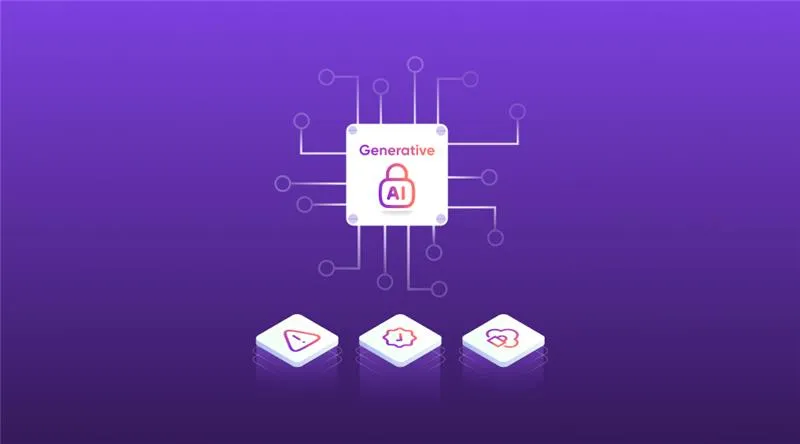
Technology

7 min
Generative AI is moving fast into enterprises, from banks to hospitals to government agencies. Adoption is rapid, but security planning lags. Unlike traditional systems, these models can be exploited through prompt injection, poisoned data, or manipulated to leak sensitive information. They are also misused for phishing, deepfakes, and malicious code.

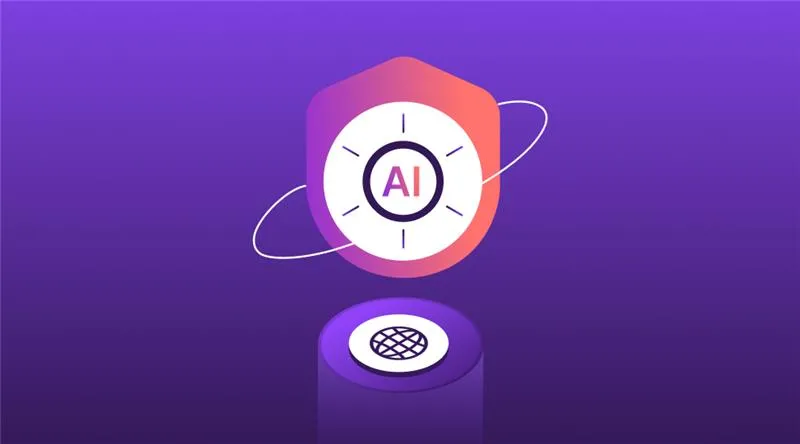
Technology

7 min
AI-powered Web Application Firewalls (WAFs) go beyond static rules by using machine learning, anomaly detection, and predictive analysis to block zero-day threats, reduce false positives, and protect APIs at scale. Unlike traditional WAFs, they self-learn, adapt in real time, and cut operational costs while improving compliance and trust.

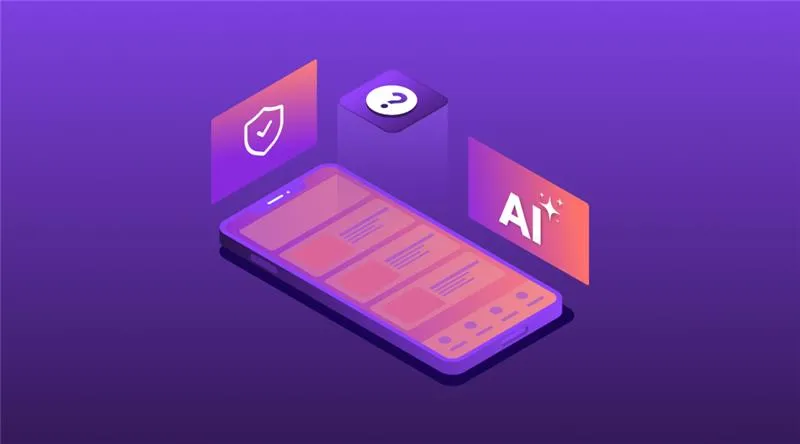
Technology

5 min
AI is redefining mobile app security by transforming how threats are detected, tested, and prevented. From continuous monitoring and fraud detection to compliance with regulations, AI ensures apps remain resilient against modern risks. This means safer apps, protected users, and stronger businesses. Investing in AI-driven security today builds trust, drives growth, and secures long-term competitive advantage.

Feeling lost!! Book a slot and get answers to all your industry-relevant doubts